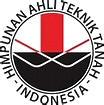Studi Eksperimen Penambahan Tailing Pada Campuran Mortar Sebagai Substitusi Parsial Semen Untuk Dinding Panel
DOI:
https://doi.org/10.22487/renstra.v3i1.412Keywords:
tailing, ferrocement, mortar, wall panelAbstract
Poboya is located in East Palu District, Palu City, Central Sulawesi. This village is now an area that has become a traditional gold mining activity. The end result of the mining process in the form of these deposits becomes waste which is commonly referred to as tailing. This waste contains a lot of carbon and no one has utilized it. This study was conducted to determine the optimum percent value of adding tailing to the mortar mixture so that it can affect the compressive strength of the mortar. This research uses experimental methods and literature studies. The location of the research was carried out at the Laboratory of Structures and Building Materials, Faculty of Engineering, Tadulako University. The variations used in the use of gold mine waste (tailing) as partial cement substitution are 50% and 75% by weight of cement. Tailings will replace some of the cement in a mortar mix made of sand, cement and water. The test to be carried out is the compressive strength of the mortar at the age of 7 and 28 days. Mortar test object made measuring 5 x 5 x 5 cm. The results obtained showed that 50% tailings had a higher compressive strength of 156 kg/cm2 than mortar using 75% tailing only had a compressive strength of 21.33 kg/cm2 at the age of the specimen 28 days. Mortar is used for the manufacture of wall panels with ferrocement technology.
Downloads
References
E. Rabihati, I.A. Purnama, M.S. Adjie, and V.D. Rachmawan, “Pemanfaatan Limbah Bauksit (Tailing Bauxite) Sebagai Bahan Pengganti Agregat Halus Terhadap Kuat Tekan, Kuat Tarik Belah, dan Modulus Elastisitas Pada Beton”, Retensi: Jurnal Rekayasa Teknik Sipil, vol. 1, no. 1, p. 1, 2020.
I.A. Pamayo and Y. Trihadiningrum, “Stabilisasi/Solidifikasi Timbunan Tailing Penambangan Emas Rakyat Kulon Progo Menggunakan Semen Portland”, Jurnal Teknik ITS, vol. 5, no. 2, p. 242, 2015.
A. Majid, A. Rohman, and R. R. Isda, “Desain Bahan Dasar Campuran Bata Ringan dari Limbah Tambang Emas Pongkor”, Jurnal Teknik, vol. 17, no. 1, p. 9, 2018.
I.J.R. Sondakh, M.D. J. Sumajouw, R. Pandaleke, and S.O. Dapas, “Pemanfaatan Tailing Sebagai Substitusi Parsial Pada Semen Ditinjau Terhadap Kuat Tekan dan Kuat Tarik Lentur”, Jurnal Sipil Statik, vol. 3, no. 4, p. 253, 2015.
Amalia and A. Murdiyoto, “Kualitas Bata Beton Berlubang Dengan Bahan Limbah Tailing Penambangan Emas UPBE Pongkor, Politeknologi, vol. 18, no. 1, p. 1, 2019.
A.Y. Mulia and I.N. Sari, “Karakteristik Limbah Tailing Sebagai Bahan Baku Mortar Siap Pakai”, Jurnal Permukiman, vol. 13, no. 1, p. 53, 2018.
S.W.M. Supit, R. Rumbayan, and S. Misilu, “Pengaruh Pemanfaatan Tailing Terhadap Kuat Tekan, Porositas dan Absorpsi Mortar Portland Composite Cement”, Jurnal Teknik Sipil Terapan, vol. 1, no. 1, p. 29, 2019.
S. Amrie, Teknologi Beton A–Z, Jakarta: Penerbit Yayasan John Hi- Tech Idetama, 2005.
Tim Penyusun, Teknologi Bahan Bangunan, Yogyakarta: Sekolah Pasca Sarjana Universitas Gadjah Mada, 2008.
T. Mulyono, Teknologi Beton, Yogyakarta: Penerbit Andi, 2004.
K. Tjokrodimuljo, Teknologi Beton, Yogyakarta: Universitas Gadjah Mada, 2004.
G.B. Batson, J.O. Castro, A.J. Guerra, M.E. Iorns, C.D. Johnston, A.E. Naaman, J.P. Romualdi, S.P. Shah, R.F. Zollo, N. Swamy, B.L. Tilsen, R.B. Williamson, and R.C. Zubieta, “Guide for the Design, Construction, and Repair of Ferrocement”. ACI Structural Journal, vol. 85, no. 3, p. 325, 1988.
R.E. Pandaleke, “Kajian Manfaat Tailing Untuk Bahan Bangunan Konstruksi”, Jurnal Tekno, vol. 7, no. 52, p. 75., 2010.
R.E. Pandaleke, “Kajian Karakteristik Mortar Dengan Menggunakan Tailing dan Additive Sebagai Substitusi Parsial Semen”, Jurnal Tekno Sipil, vol. 12, no. 60, p. 21, 2014.
SNI 03-6825-2002, Metode Pengujian Kekuatan Tekan Mortar Semen Portland Untuk Pekerjaan Sipil, Jakarta: Badan Standar Nasional, 2002.
Downloads
Published
How to Cite
Issue
Section
License
Copyright (c) 2022 REKONSTRUKSI TADULAKO: Civil Engineering Journal on Research and Development

This work is licensed under a Creative Commons Attribution 4.0 International License.







 This work is licensed under a
This work is licensed under a 


